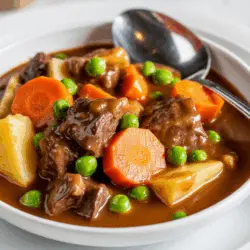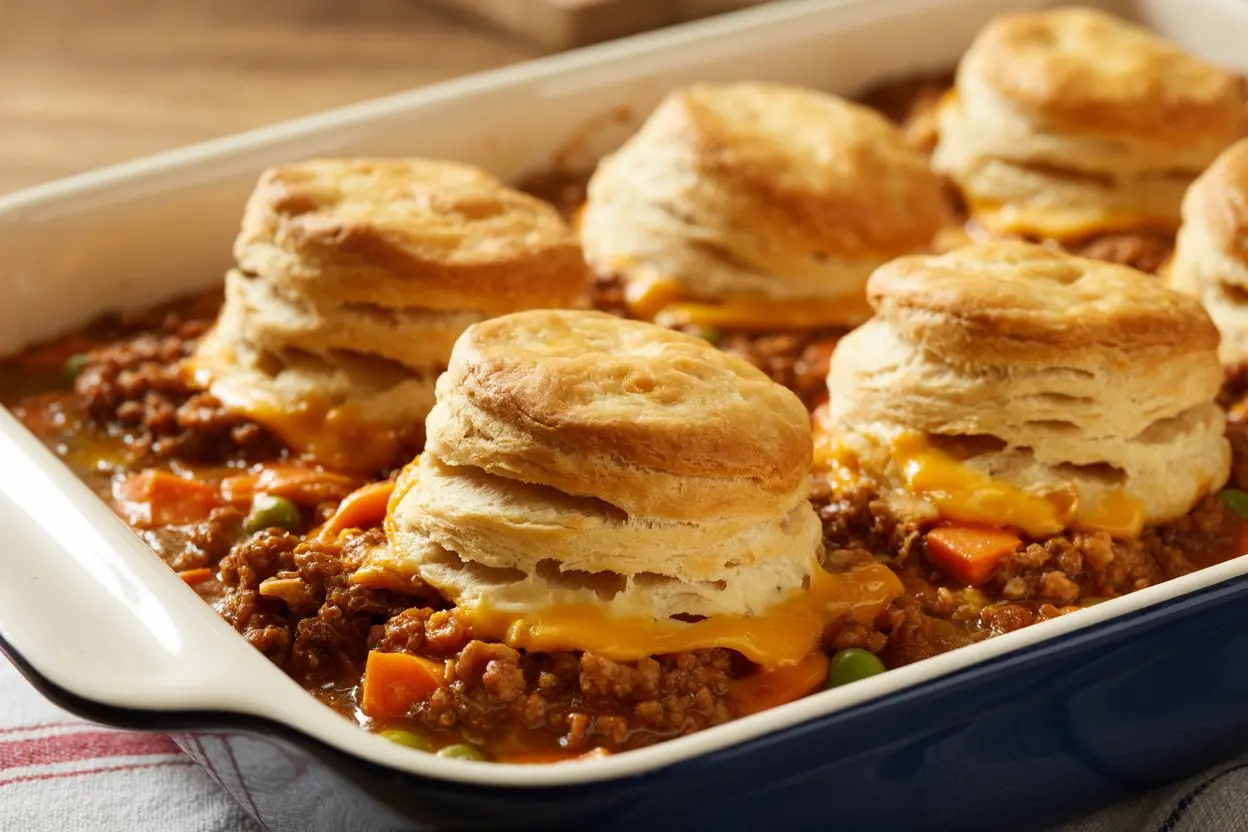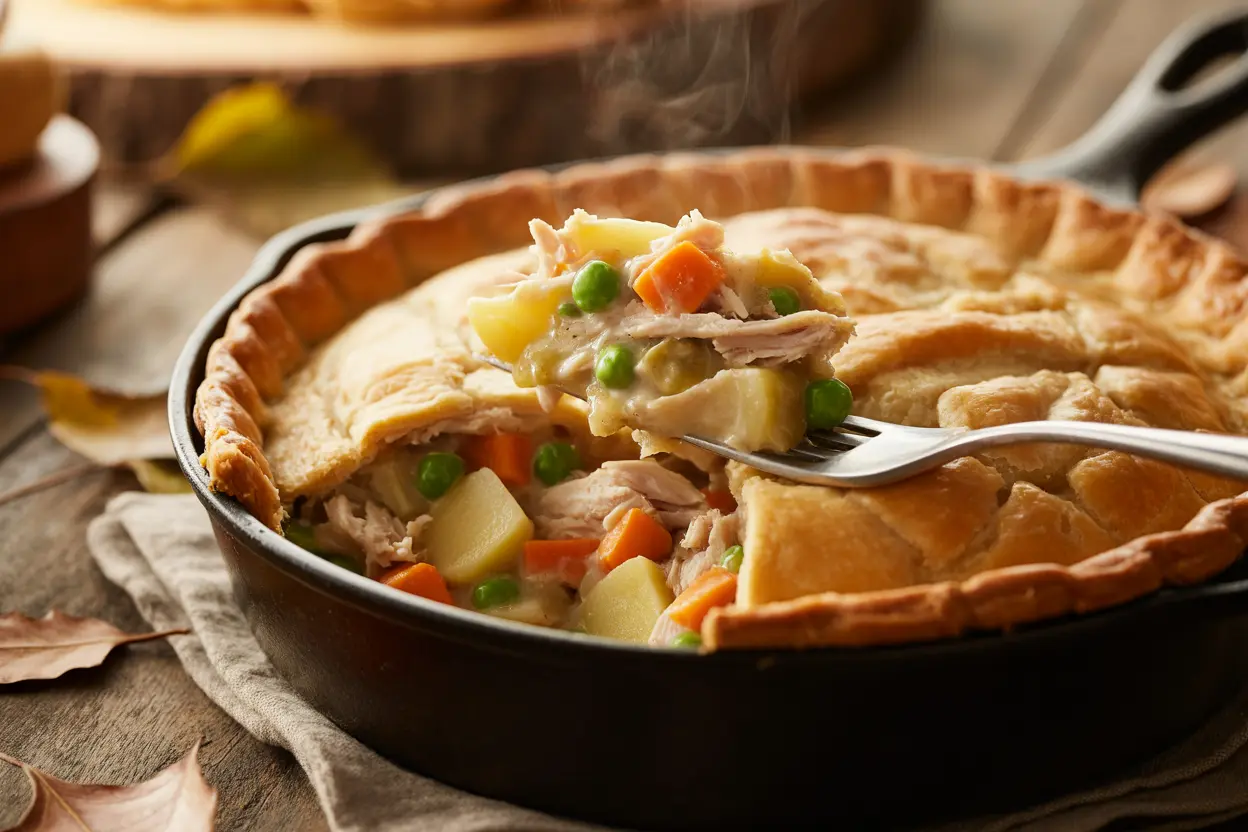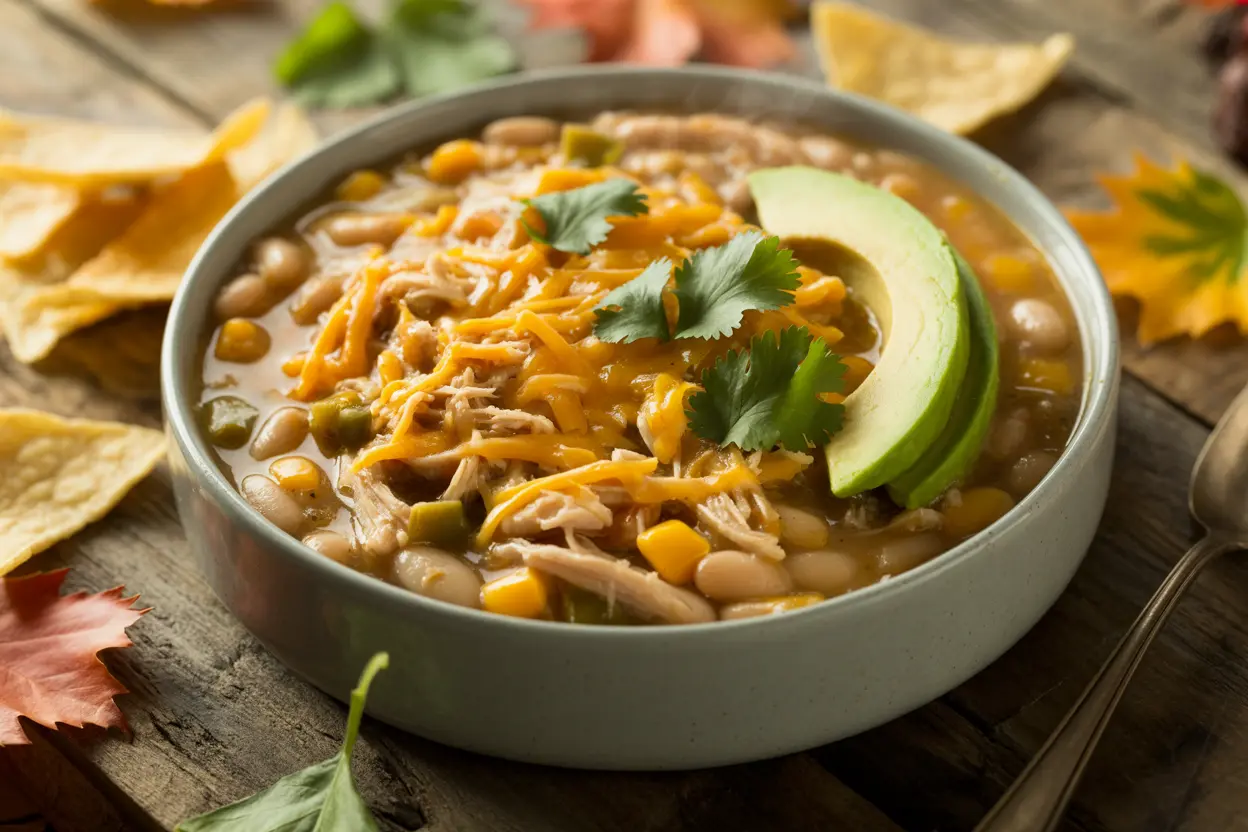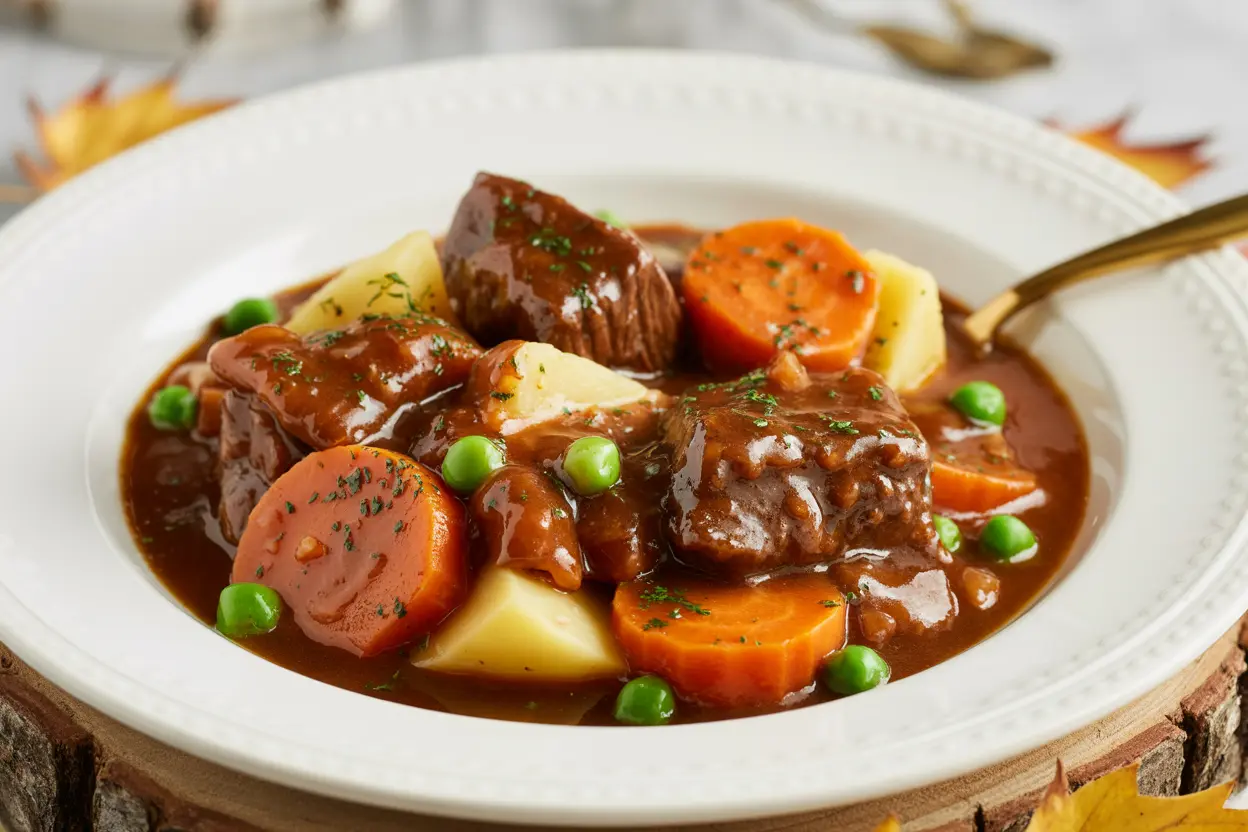
There’s something undeniably comforting about a bowl of slow cooker beef stew. Just saying it brings to mind cozy evenings, hearty spoonfuls, and that unmistakable aroma that fills your home while it simmers low and slow. In this article, I’ll walk you through everything you need to make a stew that’s not only melt-in-your-mouth delicious but also foolproof. From my personal kitchen story to pro-level tips, we’ll cover it all, step-by-step. Whether you’re new to the slow cooker life or just looking to improve your go-to recipe, this is your complete guide.
Table of Contents
Comfort in a Crock: What Makes It So Special
What makes slow cooker beef stew such a classic isn’t just the flavor, it’s the simplicity. The slow cooking process gives every ingredient time to shine. The beef breaks down beautifully, releasing all its richness into the broth. The vegetables absorb those meaty juices, and the herbs meld together like a symphony in a bowl.
And let’s be honest, it’s low-effort cooking at its finest. No constant stirring. No oven babysitting. Just prep it in the morning and come home to dinner practically done. It’s perfect for busy weeknights, weekend meal prep, or feeding a crowd with minimal cleanup.
Even better? This dish is endlessly flexible. Don’t have carrots? Swap in sweet potatoes. Want to spice it up? Toss in a bit of smoked paprika or add a splash of red wine. I even know folks who drop in pearl onions or chopped mushrooms near the end for extra umami. If you like beefy, hearty meals, this one will absolutely earn a permanent spot in your rotation.
Whether you’re feeding picky kids or impressing guests, slow cooker beef stew fits the bill. It’s the kind of meal that doesn’t just fill your stomach, it sticks to your ribs and stays in your memory. And that, in my book, is what real comfort food is all about.
Ingredients and Preparation Guide for the Perfect Beef Stew in Slow Cooker
When it comes to making a truly satisfying beef stew in slow cooker, your ingredient choices matter more than you might think. This isn’t the time to toss in just anything from the fridge. With a few thoughtful choices, you can turn a basic dish into something unforgettable.
Best Cuts of Meat and Vegetables to Use
The foundation of any great stew is the beef. I always recommend chuck roast for its perfect balance of fat and connective tissue. It transforms into fork-tender bites during long, slow cooking. While pre-cut stew meat is convenient, it’s often a mix of cuts that don’t cook evenly. If you’ve got time, buy a chuck roast and cube it yourself-you’ll thank me later.
For veggies, think hearty. Yukon Gold potatoes hold their shape better than Russets, and their creamy texture plays beautifully against the beef. Carrots are a must for sweetness and color. I also like to throw in some frozen peas at the very end to keep their pop and vibrancy intact.
An insider tip from my own kitchen? I sometimes toss in a couple of halved baby red potatoes unpeeled-gives it a rustic feel and the skins hold flavor.
This is the same approach I use in my sirloin tip slow cooker pot roast, which leans on ingredient quality for maximum payoff.
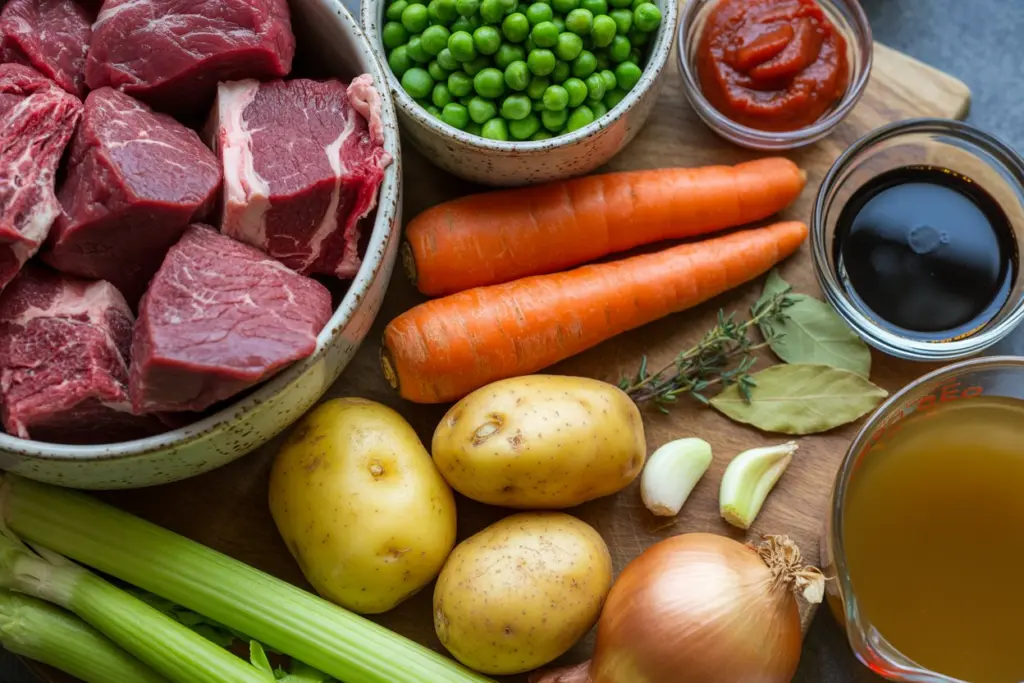
How to Prep for Maximum Flavor
If you’re aiming for a rich, deeply flavored beef stew in slow cooker, don’t skip the browning. Yes, it’s an extra step, but quickly searing the beef in a skillet first caramelizes the exterior and adds complex flavor to the final dish. You can even deglaze that pan with a bit of beef broth or wine and pour it right into the slow cooker. Gold.
Layering matters too. Start with root vegetables on the bottom (they take longer to cook), followed by beef, then pour over your broth and seasonings. I use a mix of garlic, thyme, bay leaf, and a touch of Worcestershire sauce for that umami depth.
Reserve tender ingredients like peas or mushrooms for the last hour of cooking to avoid them turning to mush.
For those who like to experiment with leftovers, check out my slow cooker leftover turkey tortilla soup-same prep logic, totally different flavor vibe.
Getting the prep right is the key to a stew that doesn’t just taste good, but feels like it’s been simmering in your grandmother’s kitchen all day long.
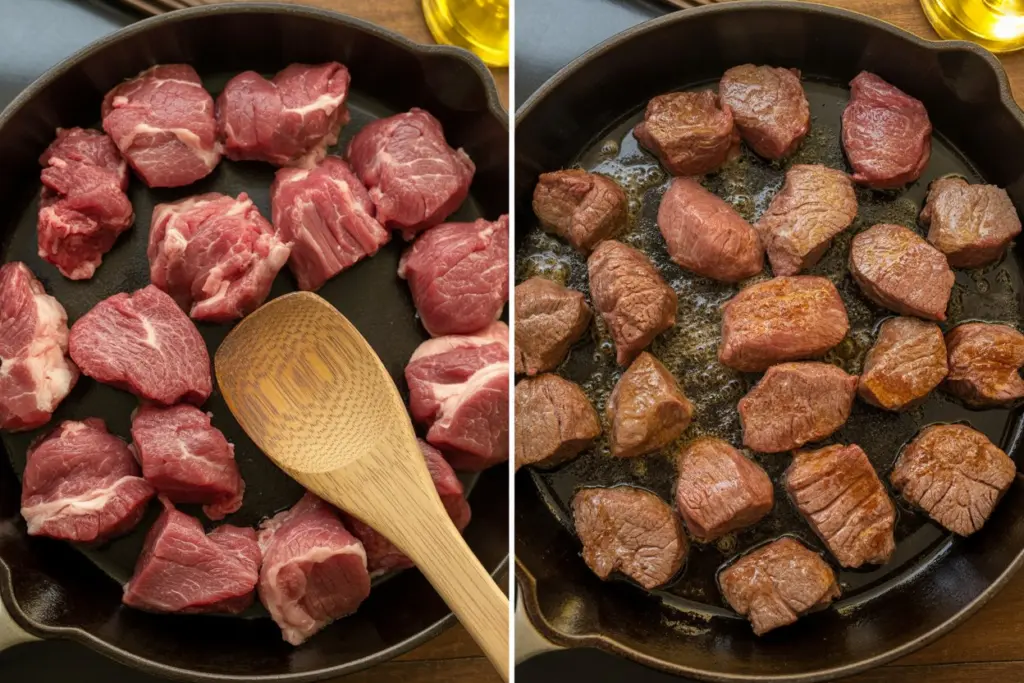
Cooking Methods, Timing, and Tips for a Foolproof Crock Pot Beef Stew Recipe
Once you’ve nailed down your ingredients, the next step is mastering how to cook them low and slow. The beauty of a good crock pot beef stew recipe is that you don’t need fancy techniques, just patience and a little guidance. Let’s break down cook times, settings, and what to do if your stew’s looking more like soup.
Cook Times and Temperature for Perfect Texture
The biggest decision with any crock pot beef stew recipe is choosing between low and high heat. Here’s the deal: low is always better for tenderness and flavor. When cooked on low for 8-10 hours, the collagen in the beef slowly breaks down into gelatin, giving you that rich, melt-in-your-mouth texture. The meat stays juicy, and the flavors have time to deepen.
Cooking on high for 4-6 hours is fine in a pinch, but the texture won’t be quite as luxurious. You also run a higher risk of overcooked vegetables or dry beef if you’re not careful.
So how do you know when your stew is done? Use the fork test. If a chunk of beef breaks apart easily with gentle pressure, you’re golden. Your potatoes and carrots should be soft but not disintegrating. If the stew smells incredible and the texture is right, you’re ready to serve.
I use the same slow-cook logic in my easy chicken pot pie crock pot recipes-longer cooking always yields better flavor development.
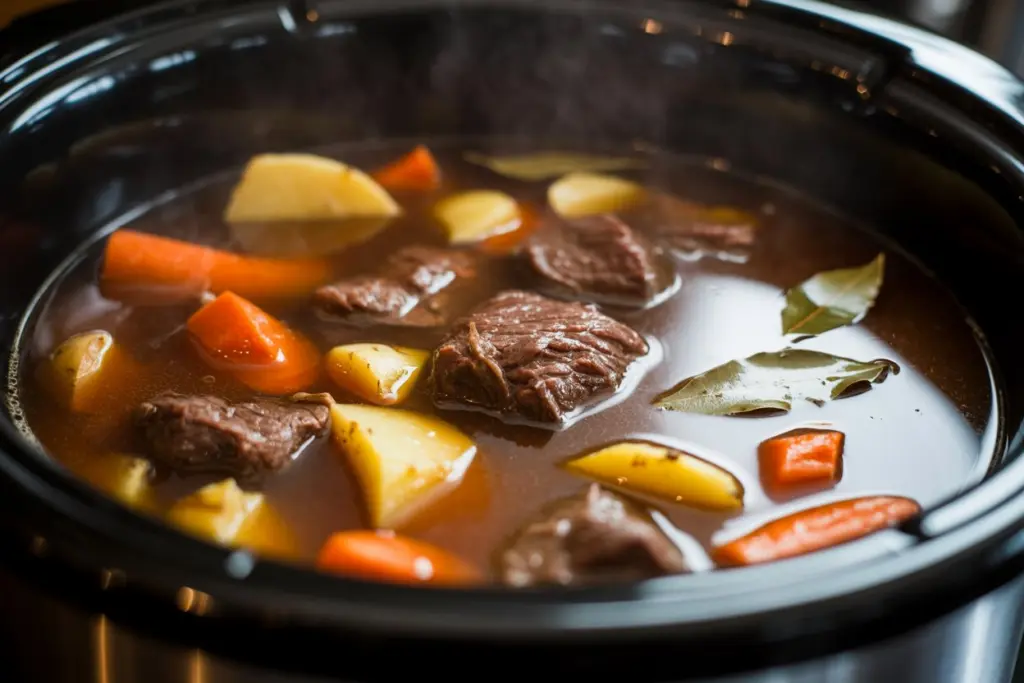
How to Thicken the Stew Without Ruining It
There’s nothing worse than a watery stew, but don’t panic if your broth looks thin toward the end. There are a few easy and foolproof ways to thicken your crock pot beef stew recipe without turning it into gravy.
Cornstarch slurry is the quickest fix. Just mix 1 tablespoon of cornstarch with 1 tablespoon of cold water, stir it into the stew during the final 30-60 minutes of cooking, and turn the heat to high. The slurry thickens the broth into a glossy, silky sauce that clings to every bite.
Prefer a more natural route? Mashed potatoes work wonders. Stir in half a cup of plain mashed potatoes near the end to boost thickness without changing flavor too much. I’ve even tossed in instant potato flakes in a pinch, they dissolve easily and thicken without lumps.
Finally, you can always let your stew simmer uncovered in the last hour to reduce and concentrate the liquid. Just crack the lid slightly and give it time. This approach enhances flavor while also thickening.
These techniques aren’t just for beef, try them in recipes like my hearty cheesy ground beef rice casserole where balancing creaminess and thickness is key to satisfaction.
Whichever method you choose, make sure you don’t overdo it. A great stew should be thick enough to coat a spoon, but not so thick it loses its soul.
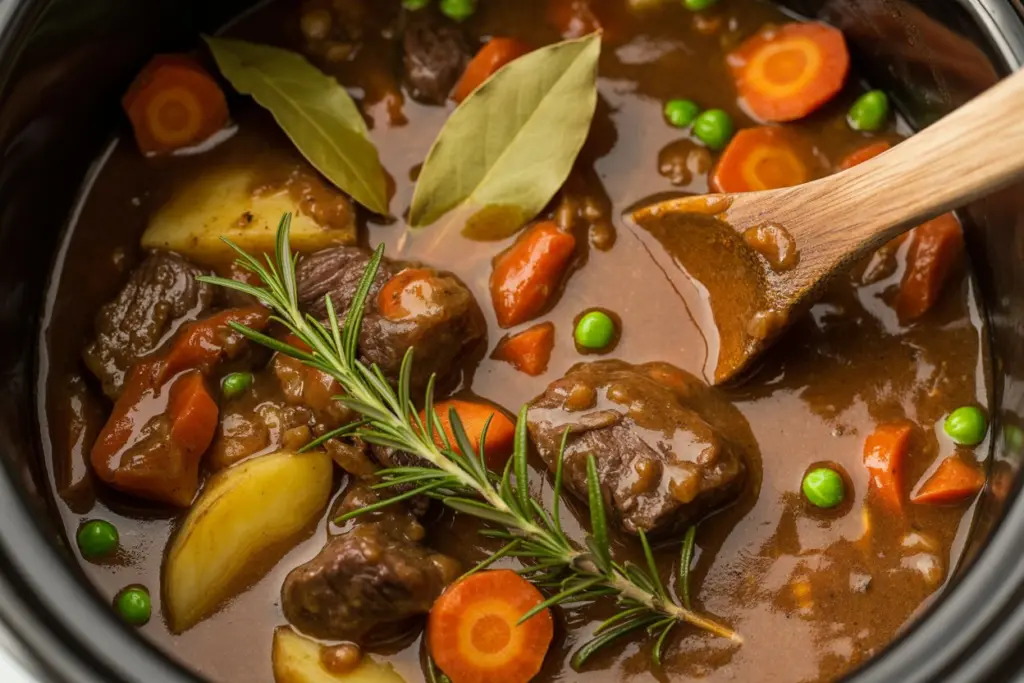
Storing, Serving, and Variations for the Best Slow Cooker Beef Stew
You’ve cooked it low and slow, thickened it just right, and the whole house smells like comfort. But here’s where a lot of folks stop short-what do you do with the leftovers? And how can you keep the magic going beyond just one meal? The best slow cooker beef stew isn’t just a one-and-done recipe, it’s a meal that keeps on giving. Here’s how to stretch your effort into future comfort.
Storage, Freezing, and Reheating Tips
Once your stew has cooled a bit, transfer it into airtight containers. In the fridge, it’ll last 4 to 5 days, and I swear it tastes even better the next day. The flavors deepen, the textures settle-it’s like the ingredients had a meeting overnight and decided to become best friends.
For freezing, make sure everything’s completely cooled. Divide it into single servings if you’re planning ahead for lunches or quick dinners. Use freezer-safe containers or heavy-duty freezer bags (lay them flat for easy stacking). Your best slow cooker beef stew will hold up for about 3 months in the freezer without any loss of flavor.
Reheat gently-either in a saucepan over medium heat or in the microwave at 70% power in 1-minute bursts, stirring in between. Avoid boiling it, which can toughen the beef and make potatoes mushy.
If you’re a fan of next-day meals that retain flavor and texture, I follow the same method when storing my spicy ground beef fajita rice bowls. It’s a great way to reduce waste and stress on busy nights.
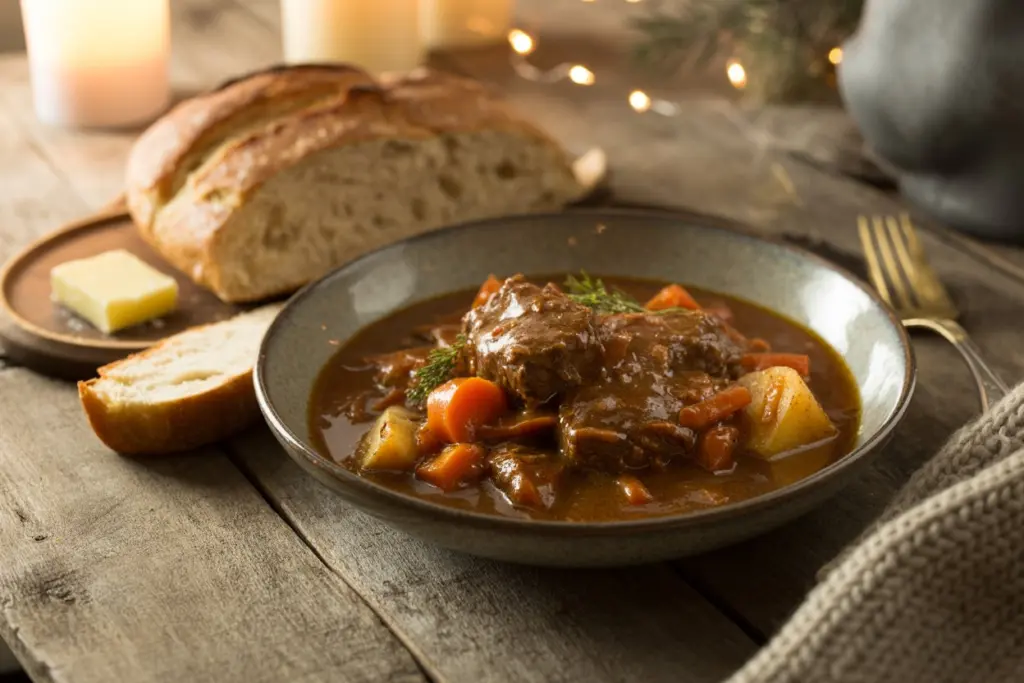
Creative Variations and Serving Ideas
Now comes the fun part-making your best slow cooker beef stew work overtime. The beauty of this dish is its versatility. Here are a few of my favorite spins:
Add barley or wild rice: This bulks up the stew and gives it a whole new texture. Toss it in halfway through cooking so it doesn’t go mushy.
Stir in balsamic vinegar: A splash of either near the end of cooking lifts the flavor and adds beautiful depth.
Go mushroom-heavy: Add sliced creminis or portobellos in the last two hours for an earthy boost.
Transform leftovers into a pot pie: Pour your stew into a pie dish, top it with a flaky crust or puff pastry, and bake until golden. It’s rustic, delicious, and makes use of what you already cooked.
Serve it over mashed potatoes or egg noodles: This turns a soup-like meal into a stick-to-your-ribs dinner. It’s a favorite in my house when we’re craving something cozy but a little different.
I even draw inspiration from my creamy chicken and broccoli alfredo bake when creating fusion leftovers-comfort food knows no limits.
The possibilities are endless, and that’s what makes this the best slow cooker beef stew you’ll keep coming back to. It’s a recipe you can reinvent again and again, depending on your mood and what’s in the pantry.
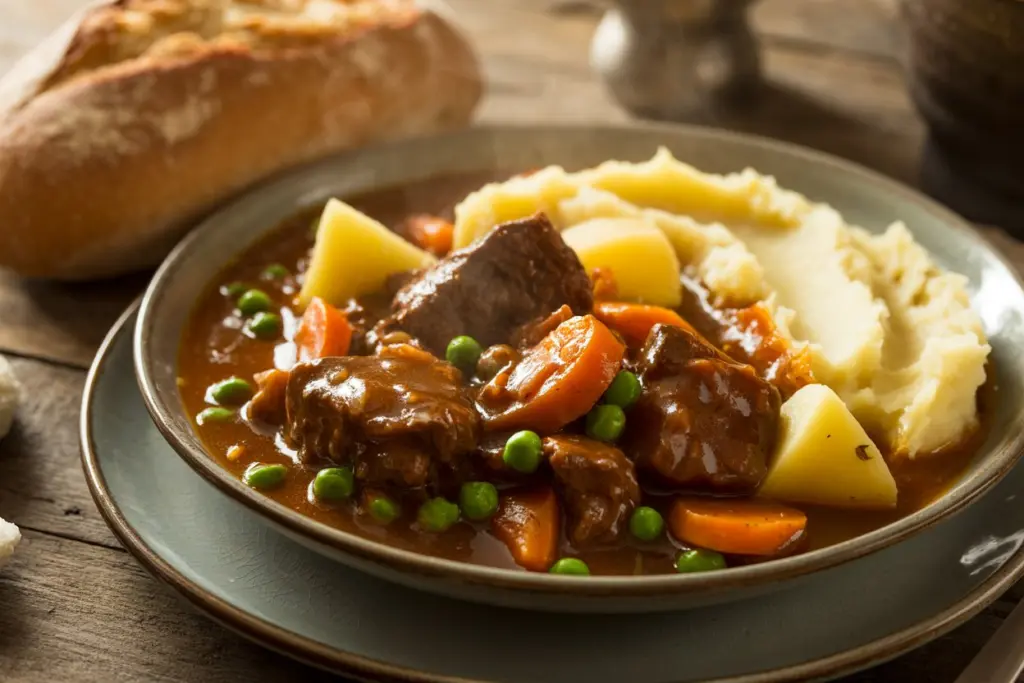
FAQs
Can I put raw beef in the slow cooker for stew?
Yes, you absolutely can put raw beef directly into the slow cooker. However, for the best flavor, searing the beef first adds a rich, caramelized depth that enhances the entire stew. If you’re short on time, go ahead and skip the browning, it’ll still be delicious.
What is the best meat for slow cooker beef stew?
The best meat for slow cooker beef stew is chuck roast. It has the right amount of marbling and connective tissue that breaks down beautifully during slow cooking. You can also use bottom round or brisket, but chuck is the most reliable for melt-in-your-mouth texture.
How do you thicken beef stew in a slow cooker?
To thicken beef stew, add a cornstarch slurry (1 tbsp cornstarch + 1 tbsp water) in the last 30-60 minutes. You can also mash some of the potatoes into the broth or crack the lid open to let it reduce naturally.
Can you overcook stew in a slow cooker?
Yes, even in a slow cooker, stew can overcook. If it simmers too long, the beef can become dry and the vegetables may turn mushy. Stick to 8-10 hours on low or 4-6 hours on high for the best results.
Can I Put Raw Beef in the Slow Cooker?
Yes, you absolutely can put raw beef directly into the slow cooker for stew. However, for the best flavor, searing the beef first adds a rich, caramelized depth that enhances the final dish. If you’re short on time, skipping the sear won’t ruin the meal, it’ll still turn out tender and delicious.
Slow cooker beef stew is more than just a recipe, it’s a return to home, to simplicity, and to soul-warming flavor that welcomes everyone to the table. Whether you’re cooking for two or meal-prepping for the week, this dish always delivers. Trust me, once you make this from-scratch version, it’ll replace every packet-based or store-bought mix you’ve ever used. Don’t be afraid to make it your own. Now go grab your crock pot and start simmering!
